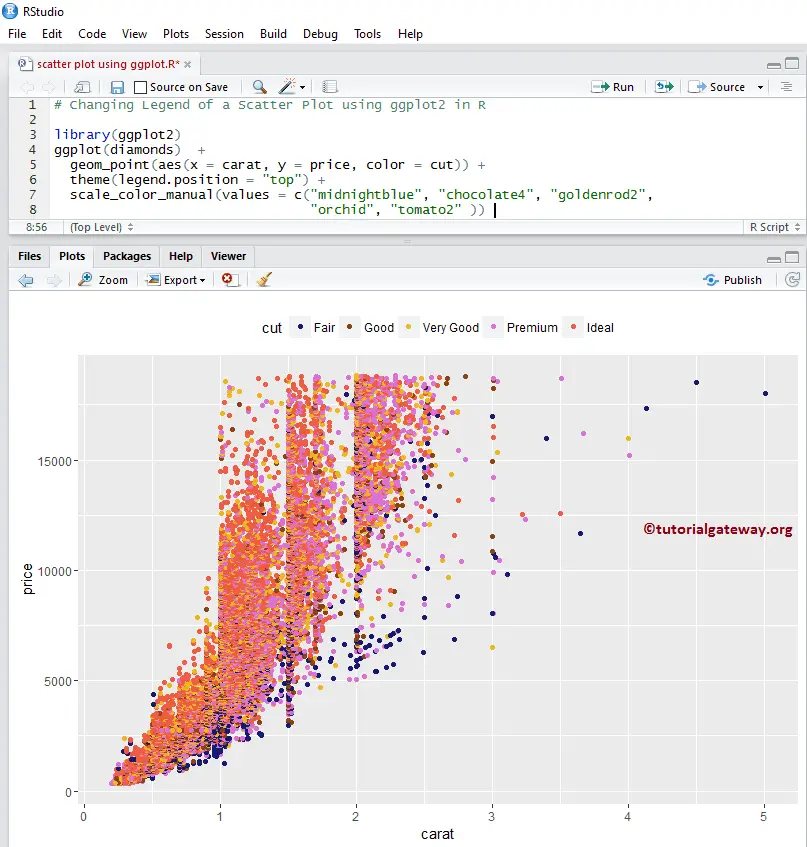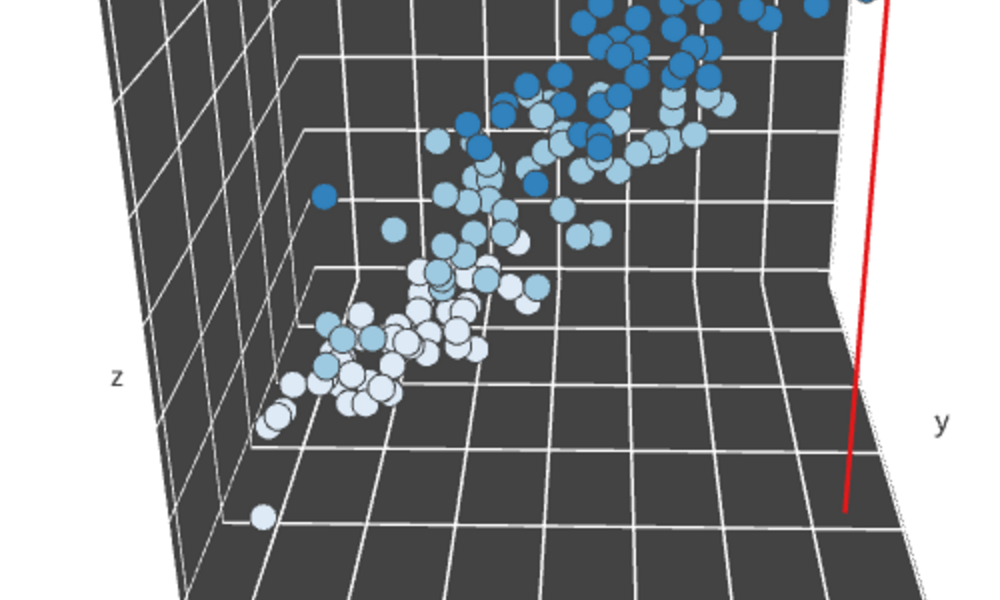

Type = c( "p", "smooth"), col.line = "darkorange", lwd = 3) Type = c( "p", "r"), col.line = "darkorange", lwd = 3) In this case the difference is pretty subtle. And let's try a different overlay - namely, a smooth regression via type = c("p", "smooth"). Let's make line that more obnoxious and more orange. Scales = list( x = list( log = 10, equispaced.log = FALSE)), On the left, we specify the default value type = "p", which requests only points, and on the right, we request a simple linear regression with type = c("p", "r"). The type = argument can be used to enhance the figure with data-responsive elements. Scales = list( x = list( log = 10, equispaced.log = FALSE))) I wish the tick marks and grid lined up, but I'm trying not to let the perfect be the enemy of the good. The next easiest thing is to specify equispaced.log = FALSE Even more is possible with functions in the latticeExtra package see some examples in these slides. There are many other log axis labelling strategies. It's better to request the log transform via the scales = argument. You can take the logarithm directly in the formula, but it's sub-optimal due to the axis tick labels, which are not so easy to read.

xyplot(lifeExp ~ gdpPercap, jDat)Ĭlearly we need to log transform the horizontal axis, i.e. In addition to grid = TRUE, grid = "h" and grid = "v" are other useful shortcuts. library(lattice) Show me the data with xyplot() # $ continent: Factor w/ 4 levels "Africa","Americas".: 3 3 3 3 3 3 3 3. # $ country : Factor w/ 140 levels "Afghanistan".: 1 1 1 1 1 1 1 1 1 1. JDat <- droplevels( subset(gDat, continent != "Oceania")) ĭrop Oceania, which only has two countries # drop Oceania # $ continent: Factor w/ 5 levels "Africa","Americas".: 3 3 3 3 3 3 3 3. # $ country : Factor w/ 142 levels "Afghanistan".: 1 1 1 1 1 1 1 1 1 1. Plan B (I use here, because of where the source of this tutorial lives): # data import from URLīasic sanity check that the import has gone well: str(gDat) # 'ame': 1704 obs. Load the Gapminder data, drop Oceania, load packagesĪssuming the data can be found in the current working directory, this works: gDat <- lim( "gapminderDataFiveYear.txt") R, containing no spaces or other funny stuff, and evoking "scatter plots" and "lattice". In due course, save this script with a name ending in.
#Scatterplot r studio code#
Develop and run your code from there (recommended) or periodicially copy "good" commands from the history. Open a new R script (in RStudio, File > New > R Script). Confirm that the new R process has the desired working directory, for example, with the getwd() command or by glancing at the top of RStudio's Console pane. To ensure a clean slate, you may wish to clean out your workspace and restart R (both available from the RStudio Session menu, among other methods).

Now is the time to make sure you are working in the appropriate directory on your computer, perhaps through the use of an RStudio project.
#Scatterplot r studio series#
This is one in a series of tutorials in which we explore basic data import, exploration and much more using data from the Gapminder project. Ignore if you don't need this bit of support. We use the xyplot() function from the lattice package in this tutorial and will revisit this ground using ggplot2 shortly. We focus on studying the relationship between two quantitative variables - possibly in conjunction with one or more categorical variables. Load the Gapminder data, drop Oceania, load packages.


 0 kommentar(er)
0 kommentar(er)
